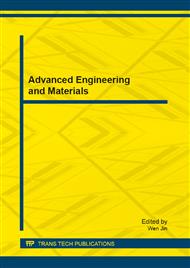p.617
p.622
p.628
p.635
p.640
p.646
p.652
p.658
p.665
Numerical Study on Aerodynamic Characteristics of NACA0015
Abstract:
In this study, a numerical simulation is made to understand the effect of the angle of attack on a NACA airfoil, which will be used for a basic shape to apply for making the vertical axis Darius wind turbine. The near-wall y+ value which is less than 1 is known to be most desirable for a near-wall modeling. Therefore, this study is aiming to observe the variation and find the optimized value of y+. The Reynolds number used in this study was 360,000, where the chord length and the velocity were 0.12m and 43.8m/s, respectively. Generally, the lift coefficient of the airfoil tends to increase as the angle of attack increases and it decreases substantially at the stall angle and then it decreases. As expected, the lift coefficient increases rapidly from 0 to 10° and then after the sudden drop of the lift (i.e., the stall) at around 10 to 16° depending on the y+ value. In this paper, it seems to be reliable and appropriate to use y+ value close to 1. From the surface pressure distribution, from the result obtained the ratio of pressure distribution of maximum value to the minimum value was 1.89and these peaks move forward to backward as the angle of attack increases.
Info:
Periodical:
Pages:
640-645
Citation:
Online since:
February 2013
Authors:
Price:
Сopyright:
© 2013 Trans Tech Publications Ltd. All Rights Reserved
Share:
Citation:


